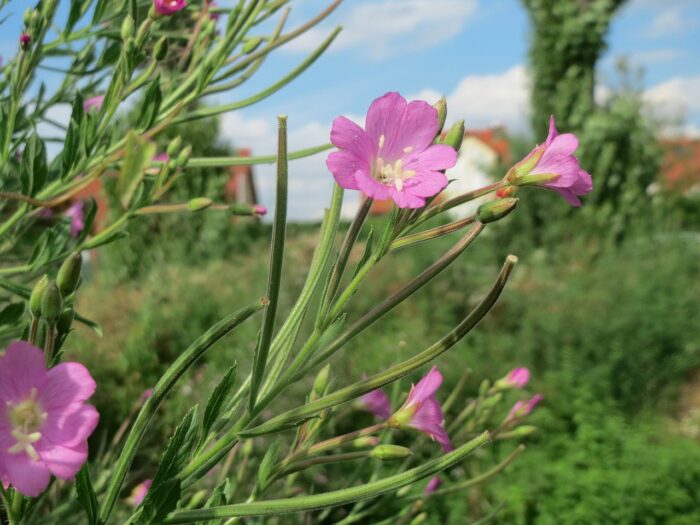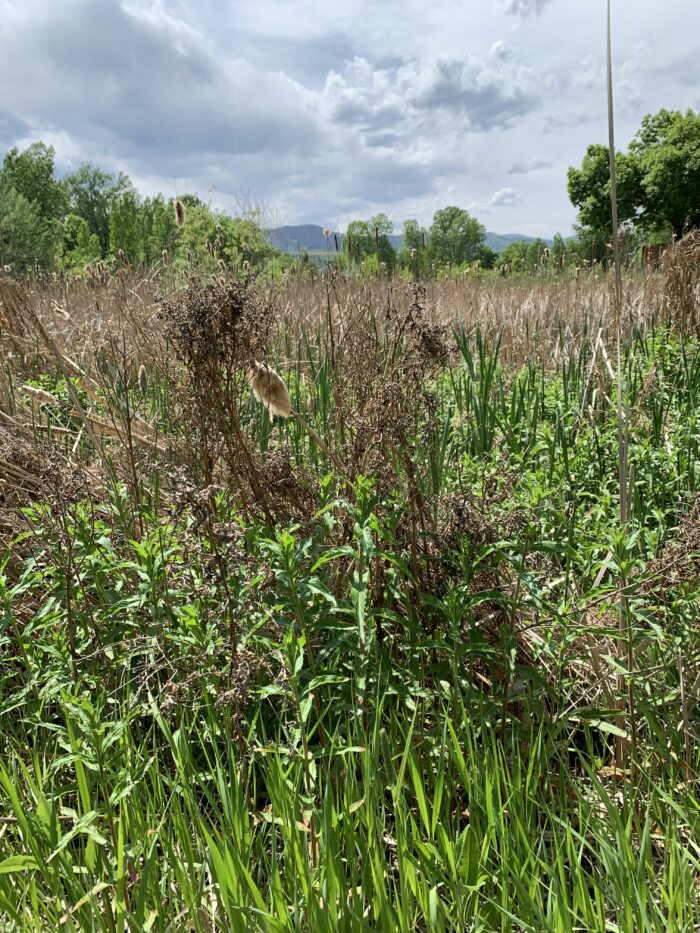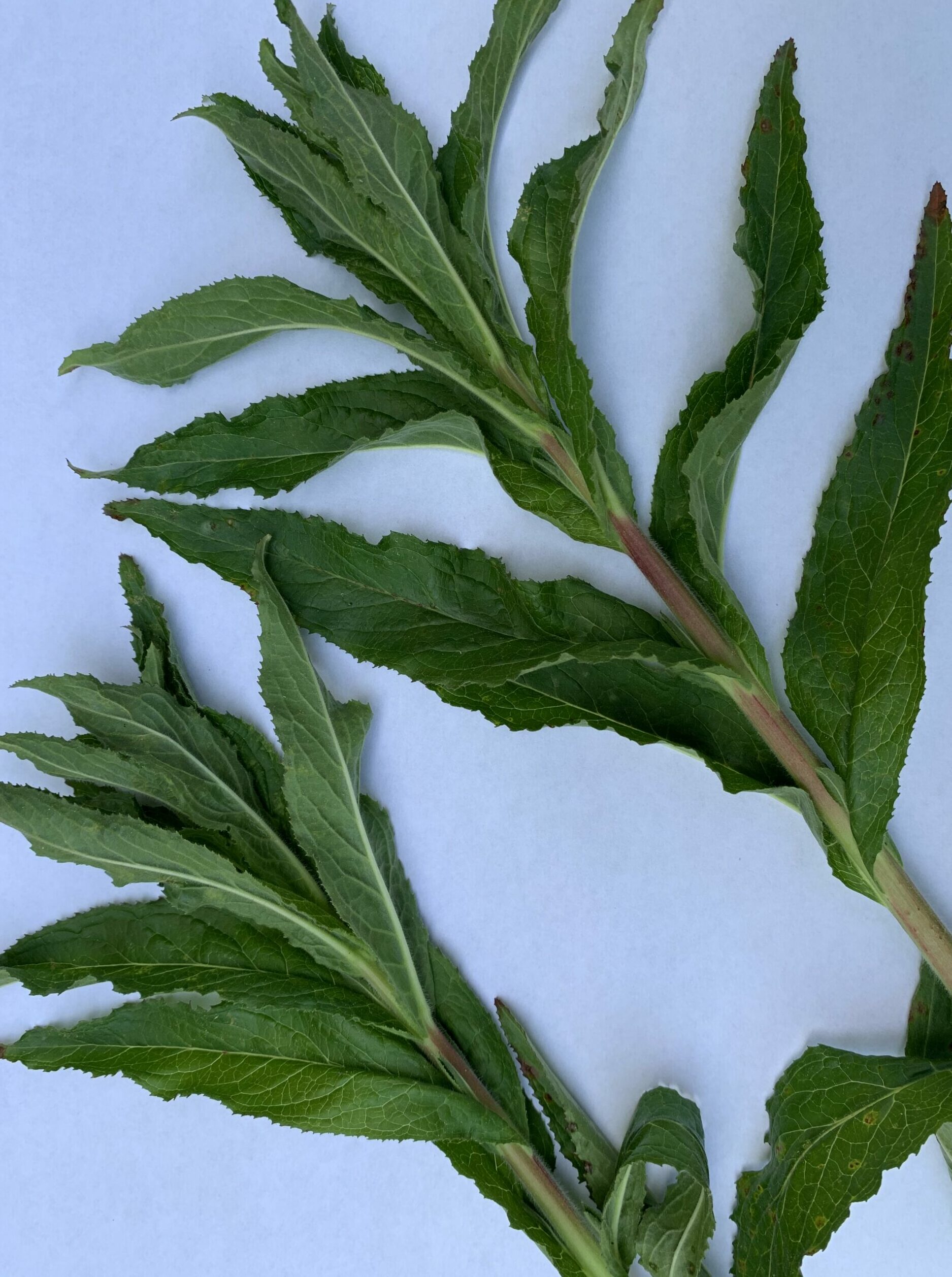
Most of us gardeners have a good read on which plants in our gardens are problematic—which we often refer to as weeds. Typically these plants make seasonal appearances, like the common mallow (Malva neglecta) that germinates in my home meadow with an impressive, if troubling, degree of tenacity. Each year I weed all that I can, digging their fibrous, white taproots from the backyard clay. And each year as soil temperatures approach those appropriate for tomato planting, a fresh crop springs anew from the seed bank left before I began weeding the space. Occasionally, however, a new undesirable plant makes its debut on our horticultural stage.
A new invasive to watch for

In short, I wanted to use this month’s post to bring attention to this emerging invader. It has yet to spread widely through our region but is of concern, and it has been successful in gaining a foothold on the Colorado Front Range. The first official Colorado record I could find of this plant, hairy willowherb (Epilobium hirsutum, Zones 2–9), which is native to Africa, Europe, and parts of Asia, came from the early 2000’s. A map produced by the Colorado Department of Agriculture flags the plant as present in at least eight counties.
Considering how many of today’s neighborhoods have natural areas that often double as retention places for neighborhood runoff, this plant may not be far from you. Keep your eyes peeled for it, and if you find it, take appropriate action to eliminate it (say, if the plant is on your property), or notify land managers who can do so (if it is on public property).
If you see what you think might be this plant but aren’t sure, your local Colorado state extension office or county weed management office should be able to help. Alarmingly, I’ve even found the species making a backstage appearance in nursery pots that its seeds had blown in to (yikes!).
I have been able to find reports of hairy willowherb primarily from the Colorado Front Range, where wind-dispersed seeds helped fuel its relatively rapid spread. Just a few specimens are reported from the Wasatch Front and Heber City area in Utah as well as the Idaho-Washington border. It is a “List A” noxious weed in Colorado.

Plant Profile
Scientific name: Epilobium hirsutum
Common names: Hairy willowherb, giant willowherb, codlins-and-cream
Zones: 2 – 9
Size: 3 feet wide and 3 to 6 feet tall
Habitat: Wet soils, riparian areas, and wetlands.
Native Range: Africa, Asia, and Europe
Diagnostic features
- Aggressively spreading via rhizomes and wind-borne seeds
- Leaves opposite one another
- Dense, soft hairs present on most parts of the plant aboveground, especially upper stems and leaves
- Magenta flowers with four petals appear in early summer and are followed by slender seedpods that split to reveal small seeds surrounded by cottony tuft.
Look-a-likes
Of the native species, few attain the height of hairy willowherb, and fewer still form monocultures. Fireweed (Chamerion angustifolium, Zones 2–7) is a native that may be this plant’s best regional look-a-like and grows primarily at higher elevations where it can form monocultures in disturbed sites. So far, hairy willowherb has not shown that it can colonize higher portions of our region, further helping to separate the two species. Fireweed also lacks the dense, soft hairs of hairy willowherb and produces flowers in a dense, single spike, rather than a loose cluster. While fireweed and hairy willowherb have similar flower size and color, fireweed keeps spaces between flower petals; hairy willowherb petals touch or overlap to form a cup shape.
 |
 |
Management
Prevention is the best management for this plant. Maintaining healthy plant communities, whether in your garden or wild spaces, reduces the chances of an invader having the chance to get a foothold. Once present, small populations of hairy willowherb can be hand dug, but broken rhizome pieces will resprout, requiring several rounds of digging. Preventing flowering by cutting or mowing stands can slow the spread of this plant. Larger, established stands are best managed by professionals, as chemical controls are the only proven method on such a scale. Regular scouting after eradication is needed to ensure that plants don’t reestablish from seed or rhizome pieces in future years.
Learn more about managing invasive plants:
Identifying and Controlling Common Invasive Plants
Remove These Regional Invasive Plants
How to Get Rid of Invasive Plants
Bryan Fischer lives and gardens at the intersection of the Great Plains and the Rockies. He is a horticulturist and the curator of plant collections for a local botanic garden.
Fine Gardening Recommended Products

Greenworks 40V 14" Chainsaw, 2.5Ah USB Battery and Charger Included
Fine Gardening receives a commission for items purchased through links on this site, including Amazon Associates and other affiliate advertising programs.

Felco Pruning Shears (F 9) - High Performance Swiss Made One-Hand Left-Handed Garden Pruners
Fine Gardening receives a commission for items purchased through links on this site, including Amazon Associates and other affiliate advertising programs.



















Comments
Log in or create an account to post a comment.
Sign up Log in